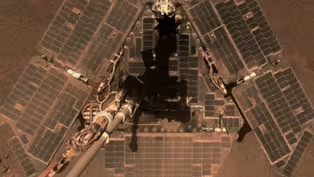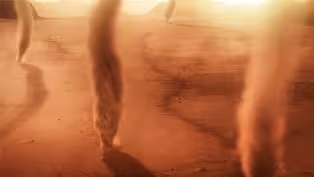
Venus: The Planet With Battery Acid Clouds
Clip: Season 51 Episode 9 | 3m 27sVideo has Closed Captions
This is what it would be like to walk on the surface of Venus.
The surface of Venus is comparable to the bottom of Earth’s oceans with one major difference: Venus has the hottest planetary surface in the solar system.
Problems playing video? | Closed Captioning Feedback
Problems playing video? | Closed Captioning Feedback
National Corporate funding for NOVA is provided by Carlisle Companies and Viking Cruises. Major funding for NOVA is provided by the NOVA Science Trust, the Corporation for Public Broadcasting, and PBS viewers.

Venus: The Planet With Battery Acid Clouds
Clip: Season 51 Episode 9 | 3m 27sVideo has Closed Captions
The surface of Venus is comparable to the bottom of Earth’s oceans with one major difference: Venus has the hottest planetary surface in the solar system.
Problems playing video? | Closed Captioning Feedback
How to Watch NOVA
NOVA is available to stream on pbs.org and the free PBS App, available on iPhone, Apple TV, Android TV, Android smartphones, Amazon Fire TV, Amazon Fire Tablet, Roku, Samsung Smart TV, and Vizio.
Buy Now

NOVA Labs
NOVA Labs is a free digital platform that engages teens and lifelong learners in games and interactives that foster authentic scientific exploration. Participants take part in real-world investigations by visualizing, analyzing, and playing with the same data that scientists use.Providing Support for PBS.org
Learn Moreabout PBS online sponsorship- Venus looks so beautiful in the evening sky, brilliant, clear, white, just stunningly lovely to see.
Yet it's such a horribly nasty environment.
- [Narrator] Looking down from orbit, we can't actually see Venus's surface at all.
Instead, all we see are endless, thick churning clouds that completely conceal the rest of the planet.
- Historically, we thought, "Oh, Venus has clouds.
They're probably made out of water.
It might be sort of nice there."
But then when we started to actually get data from spacecraft, we discovered, no, they're not water.
In fact, they're battery acid.
- The clouds on Venus are made up of extremely concentrated sulfuric acid, one of the most corrosive substances we know of.
- If you were to go skydiving through the clouds of Venus, there wouldn't be a lot of you left at the end.
- [Narrator] But if we could withstand the acid and took the plunge down through Venus's clouds, we'd reach a landscape that is eerily calm, but with air pressure more than 90 times greater than at Earth's surface.
- Even though we don't realize it, air has weight.
It's being pulled down by gravity just like the rest of us.
And so on Venus, where the atmosphere is so thick and so massive, all that air is being pulled down, and if we're on the bottom of it, then we'll feel all that pressure.
- If you found yourself on the surface of Venus, you would almost immediately be crushed.
But if somehow you survived and tried to go for a stroll, it would be exhausting.
The atmosphere is so thick, it would be like walking through molasses.
- [Narrator] The surface of Venus is comparable to the bottom of Earth's oceans, but with a key difference.
At about 900 degrees Fahrenheit, this is the hottest planetary surface in the solar system.
And again, Venus's extreme atmosphere is responsible.
- Carbon dioxide and other molecules are able to absorb and radiate heat, and so in large enough quantities, they can act like a planetary blanket that traps that heat in a planet.
That's what we call the greenhouse effect.
- And Venus's incredibly dense atmosphere is 96.5% carbon dioxide.
- Even 0.04% CO2 in our atmosphere is enough to initiate a climate crisis in our world right now.
So you can imagine how bad it is on Venus.
- [Narrator] Venus's extreme greenhouse effect means it's even hotter than Mercury, which is why what we would find there is so extraordinary.
(pensive music)
How the Martian Atmosphere Helped Nasa’s Rovers Restore Energy
Video has Closed Captions
Clip: S51 Ep9 | 2m 59s | Martian dust devils may have helped NASA’s rovers restore power during mission. (2m 59s)
Solar System: Storm Worlds Preview
Video has Closed Captions
Preview: S51 Ep9 | 30s | Discover the dramatic forces creating spectacular weather on neighboring planets and moons. (30s)
Providing Support for PBS.org
Learn Moreabout PBS online sponsorship
- Science and Nature

Capturing the splendor of the natural world, from the African plains to the Antarctic ice.













Support for PBS provided by:
National Corporate funding for NOVA is provided by Carlisle Companies and Viking Cruises. Major funding for NOVA is provided by the NOVA Science Trust, the Corporation for Public Broadcasting, and PBS viewers.




